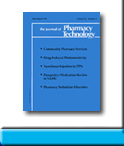 |
 |
Raltegravir-Induced Rash in a Patient Receiving Rifampin
Patricia Pecora Fulco, Jane Kaatz
To request full article click here.
Objective: To present what we believe to be the first report of a possible case of raltegravir-induced rash in a patient receiving concurrent rifampin treatment.
Case Summary: A 38-year-old man with newly diagnosed HIV and miliary tuberculosis (TB) was started on 4-drug TB treatment in combination with highly active antiretroviral therapy (HAART) including efavirenz, emtricitabine, and tenofovir. Eleven days later, the patient developed a rash and HAART was discontinued. Eight days later, HAART was reinitiated with raltegravir 400 mg twice daily and standard dose tenofovir/emtricitabine 300 mg/200 mg. After 14 weeks on this HAART regimen, the patient achieved an undetectable viral load with immune reconstitution. Twenty-two weeks after raltegravir initiation, the dosage was increased to 800 mg twice daily with continuation of emtricitabine/tenofovir. Sixteen days later, the patient developed a maculopapular rash leading to HAART discontinuation. The rash resolved in 2 weeks, and raltegravir rechallenge was not attempted.
Discussion: Raltegravir-associated rash may occur in approximately 6-7.6% of patients with HIV, with onset between 2 and 5 weeks and a usual duration of 2 weeks. Rifampin significantly decreases the raltegravir minimum concentration (Cmin), and doubling the raltegravir dosage is recommended. This results in a slightly improved raltegravir Cmin, with a significant 2.6-fold increase in the maximum concentration. Little is known about the risk factors for raltegravir-associated rash. A concentration-dependent effect may enhance the occurrence of this cutaneous adverse reaction. An objective causality assessment revealed that the adverse drug event was possible, as the patient tolerated raltegravir for 5 months and then presented with a rash after dose escalation.
CONCLUSIONS: Rifampin significantly alters the raltegravir pharmacokinetic profile. Additional safety and efficacy data are necessary to determine the optimal dosing strategy for raltegravir administered with rifampin.
J Pharm Technol 2013;29:99-102
To request full article click here.
|
|
|
||
|

